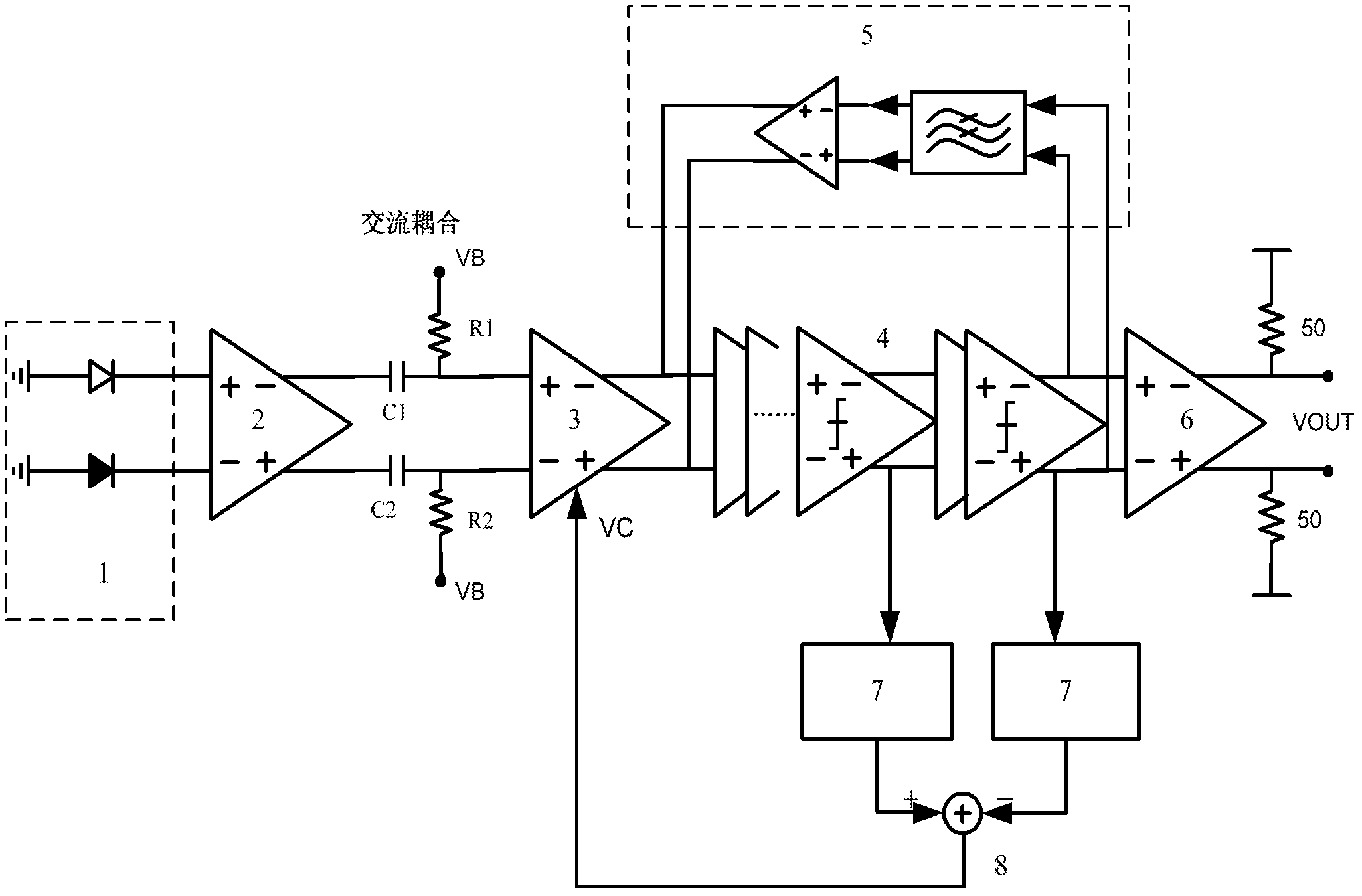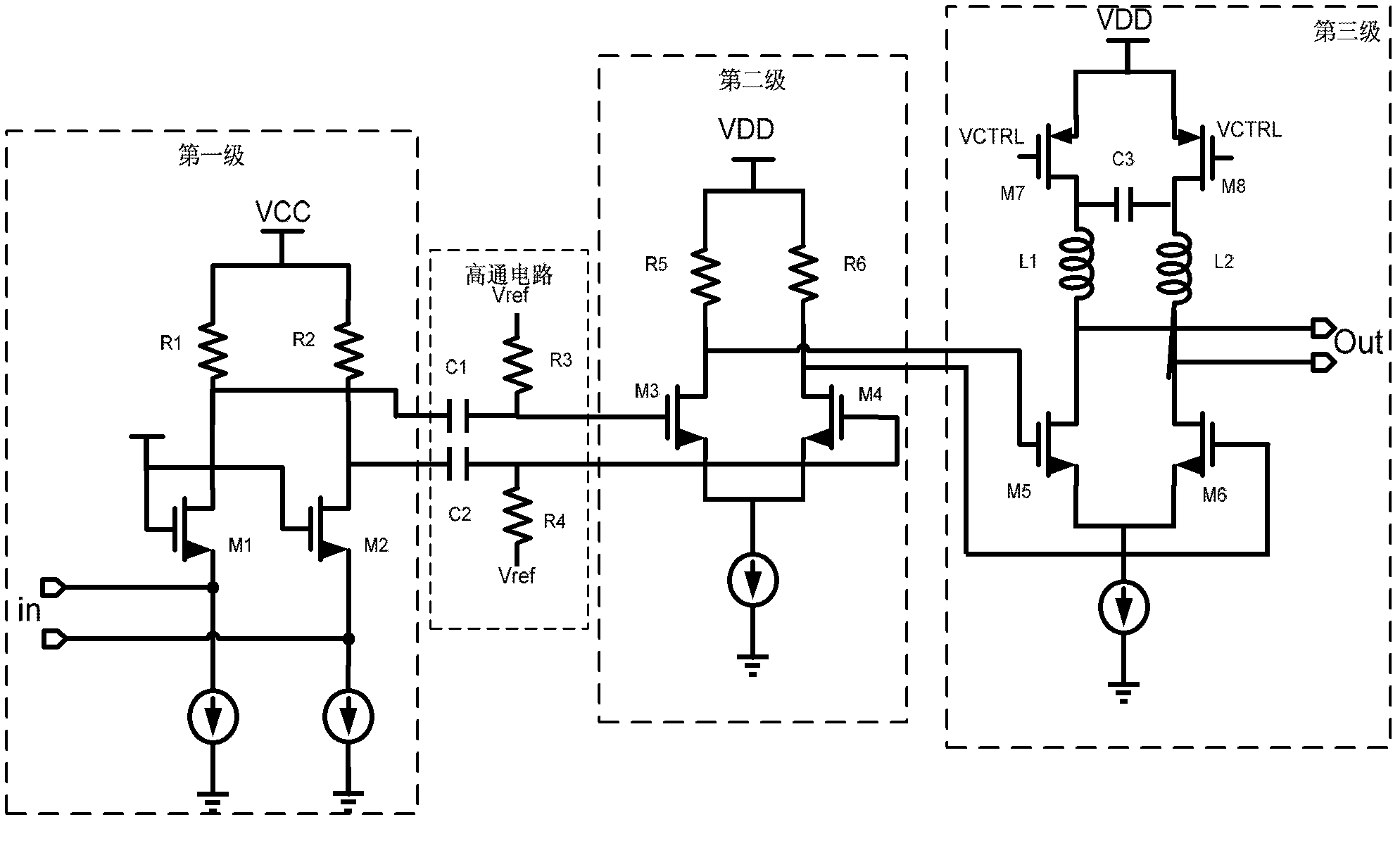Fully-integrated photoelectric conversion receiver based on standard CMOS (complementary metal-oxide-semiconductor transistor) process
A photoelectric conversion and receiver technology, applied in the field of communications, can solve the problems of slow decline of the optical frequency response curve, small channel attenuation, limited performance of the photoelectric receiver, etc., to achieve the effect of improving Jitter and bit error rate
- Summary
- Abstract
- Description
- Claims
- Application Information
AI Technical Summary
Problems solved by technology
Method used
Image
Examples
Embodiment Construction
[0031] The present invention will be further described below in conjunction with the embodiments in the accompanying drawings:
[0032] First introduce the main circuit modules:
[0033] PD: Photodetector ( figure 2 module in 1)
[0034] TIA: Transconductance amplifier, mainly realizes the conversion of current to voltage ( figure 2 in module 2)
[0035] Equalizer: Equalizer to compensate for the high frequency components of the signal ( figure 2 in module 3)
[0036] LA: Limiter, amplifies the signal ( figure 2 in module 4)
[0037] DCOC: DC Skew Cancellation Module ( figure 2 in module 5)
[0038] OutputBuffer: output buffer ( figure 2 in module 6)
[0039] Slope Detector: A slope detector that converts an AC signal to a DC signal ( figure 2 module 7) in the Figure 4 The circuit structure shown is implemented, the input signal is first passed through a high-pass filter, and then a shaper (Rectifier) is performed to obtain a feedback control component cont...
PUM
 Login to View More
Login to View More Abstract
Description
Claims
Application Information
 Login to View More
Login to View More - R&D
- Intellectual Property
- Life Sciences
- Materials
- Tech Scout
- Unparalleled Data Quality
- Higher Quality Content
- 60% Fewer Hallucinations
Browse by: Latest US Patents, China's latest patents, Technical Efficacy Thesaurus, Application Domain, Technology Topic, Popular Technical Reports.
© 2025 PatSnap. All rights reserved.Legal|Privacy policy|Modern Slavery Act Transparency Statement|Sitemap|About US| Contact US: help@patsnap.com



